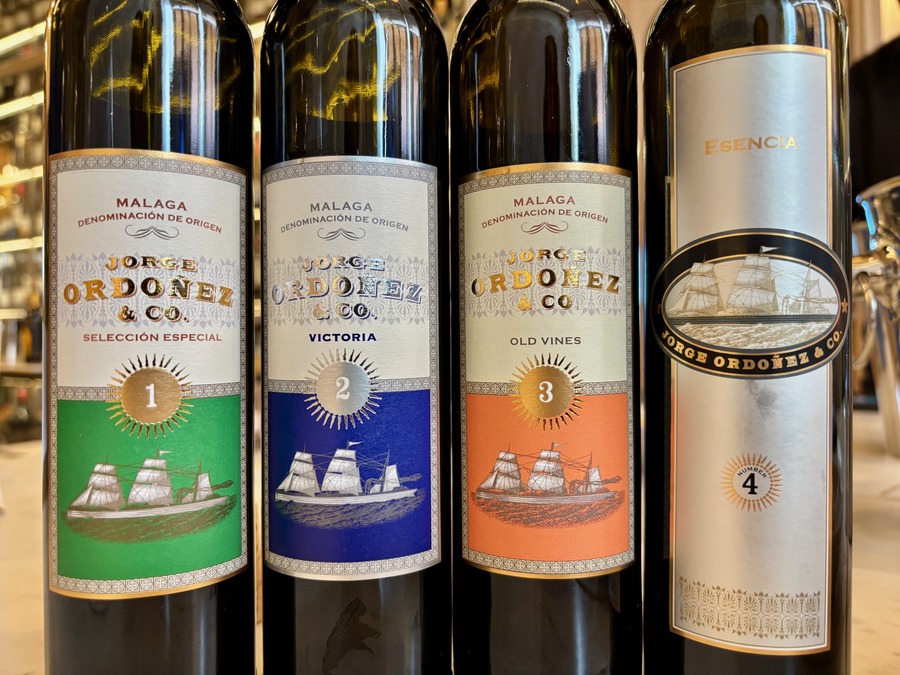Jorge Ordóñez
Julio Romero de Torres, 12. Pol. Ind. La Pañoleta. 29700 Vélez-Málaga (Málaga)
www.jorgeordonez.es
A major player in the business of importing Spanish wines into the US since founding Fine Estates from Spain in 1987, Jorge Ordóñez also gained a reputation for intervening in the wines of producers he represented. After becoming a minority shareholder in Bodega Numanthia in Toro (now part of the LVMH group) together with the Eguren family, he turned his attention in the early 2000s to full-scale wine production in Spain. He placed special emphasis on areas which were in full development at the time as well as on little-known areas with valuable old vines, hence foreseeing their great potential. In 2003 he started his own project in his native Malaga aimed at recovering the traditional sweet Muscat wines made in the rugged, fascinating Axarquía region.
Partnering with local winemakers and producers, his first projects saw quick success with the wines becoming benchmarks for their respective regions. Among them were Viña Nora (Rías Baixas), Naia (Rueda), Cénit (Zamora) and Mano a Mano (Castilla-La Mancha). The small group rapidly drew the attention of investors, and following its acquisition by Avante Selecta (Grupo Inveravante); Ordóñez repeated the model in partnership with the Gil family from Jumilla in southeast Spain. This cooperation eventually broke up, assets were divided and Jorge started over again.
At present Grupo Jorge Ordóñez comprises the following projects: Avancia (Valdeorras, Galicia), La Caña (Rías Baixas, Galicia), Jorge Ordóñez (Toro and Rueda, Castilla y León), Breca (Aragón) and Jorge Ordóñez Málaga (Málaga, Andalucía).
The extensive portfolio ranges from wines aimed at showing the character of particular grape varieties and regions, to premium reds and whites aiming for the top tier of their categories. Ordóñez has always championed old, goblet-trained, dry-farmed vines. The oldest are found in Rueda, where grapes are sourced from Segovia, and in Toro; both areas boasting a high percentage of ungrafted vines.
In white, he favours lees ageing, with many of his top wines fermented and matured in oak. Reds have traditionally displayed richness and power with new oak playing a leading role in winemaking. More recently, oak use has been restrained, with concentration remains strong in Toro, while the Garnachas from Catalayud have gained finesse and Mencía from Valdeorras shows oustanding expression.
Málaga
The wines from Málaga are particularly noteworthy thanks to the contribution of Austrian producer Alois Kracher and, following his death, his son Gerhard. Departing from the local tradition of sun-drying grapes, Kracher decided to dehydrate indoors, thus the wines show a different style with higher, more vibrant acidity.
The range starts with late-harvest sweet wines, progresses to examples made solely from dehydrated grapes with higher sugar levels (Selección Especial 1, Victoria 2, Old Vines 3), and culminates in the intensely concentrated, Tokaji-inspired Esencia (4). With its low alcohol, this wine doesn’t qualify to be under the DO Málaga appellation.
Ordóñez has played a pivotal role in promoting this fascinating area, where artisan grape growing is a must, by developing new wine categories. While the outstanding Botani (60,000 bottles, €16 in Spain) has set a standard for dry whites made from Moscatel, its Charmant-method (€17) sparkling represents a great example of a good quality commercial wine with a touch of residual sugar. The Botani range also includes a Garnacha with a saline edge and lighter body than its Calatayud counterparts.
A barrel-fermented dry Moscatel was released in the 2021 vintage. Aged in 600-litre French oak barrels, Botani Nobleza (just over 3,000 bottles, €32) is a white that will benefit from two to four years of bottle ageing. It offers greater nuance and complexity with spicy notes, juiciness, volume and persistence. The grapes are sourced from a vineyard planted in 1924 at an elevation of 600 metres in the Navarrete site in El Borge.
Most popular
NEWSLETTER
Join our community of Spanish wine lovers


